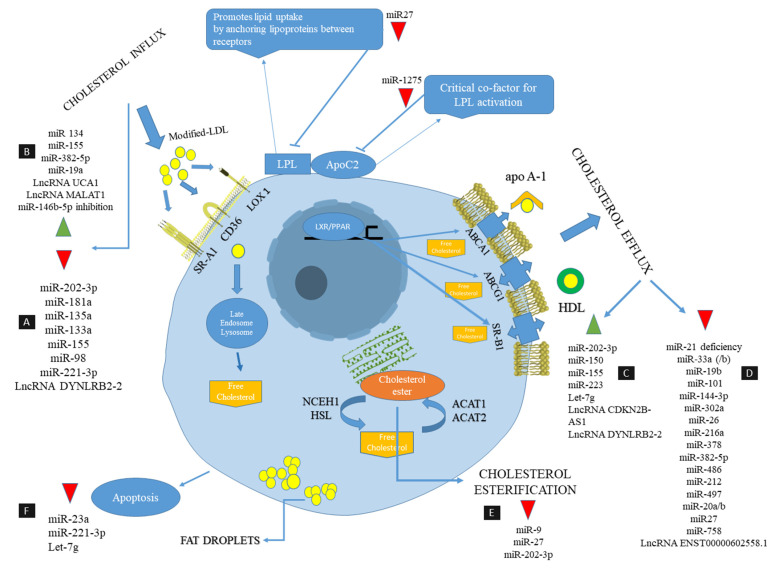Figure 1.
The mechanisms and molecules involved in cholesterol metabolism and homeostasis and the regulatory effects of Non-encoding RNAs are depicted in a foam cell. Cholesterol metabolism involves cholesterol influx, cholesterol esterification and cholesterol efflux, which ultimately leads to cholesterol homeostasis in the macrophage. Scavenger receptors SRA-1, CD36 and LOX1 are involved in oxLDL uptake. The gene expression of these receptors is downregulated in part A (see above); that is, non-encoding RNAs that have anti-atherosclerotic properties and are upregulated by part B ncRNAs, which are atherogenic and lead to lipid accumulation in macrophages. Cholesterol efflux is a pathway that transports excess free cholesterol from the cell, mainly via ABCA1, ABCG1, as well as SR-B1 transporters, leading to the formation of HDL and apoa1. The ncRNAs that reduce the formation of foam cells by increasing cholesterol efflux are specified in part C, as well as ncRNAs that lead to induction of the formation of foam cells by reducing cholesterol efflux, which are specified in part D. In cholesterol esterification, ACAT-1 and neutral cholesterol ester hydrolase (NCEH) play a key role in catalyzing the esterification of cholesterol and removing free cholesterol from foam cells, respectively. ACAT1 re-esterifies excess FC to promote the biosynthesis of CE that is stored in lipid droplets. In part E, microRNAs have been listed that reduce cholesterol esterification and increase the accumulation of free cholesterol, which ultimately promotes foam cell formation. Reducing foam cell apoptosis can stabilize atherosclerotic plaque and prevent the progression and worsening of atherosclerosis. ncRNAs that reduce foam cell apoptosis are shown in part F.  = decrease,
= decrease,  = increase.
= increase.

